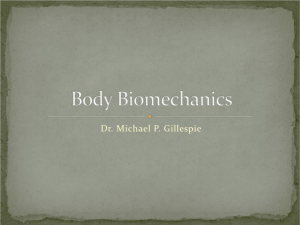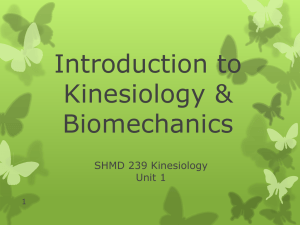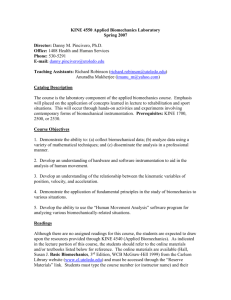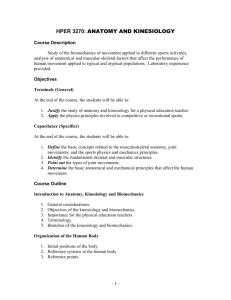intro to biomechanics (tv)
advertisement
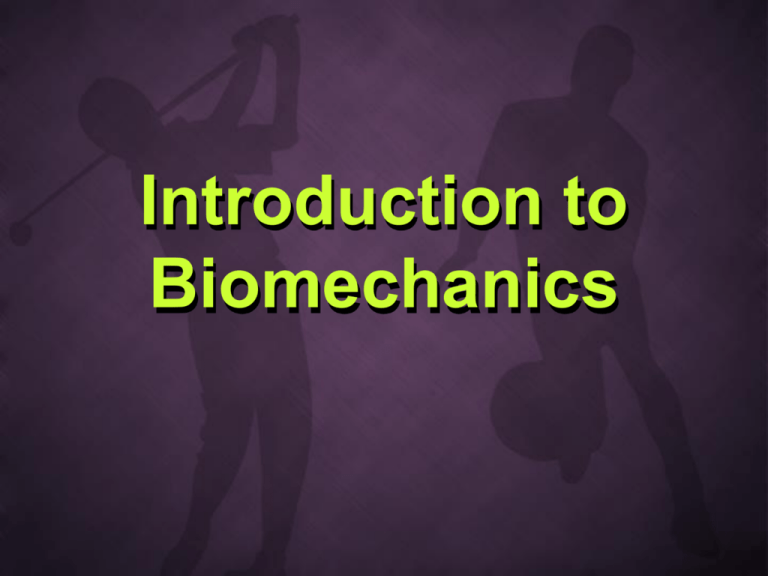
Introduction to Biomechanics Biomechanics – What is it? • The mechanical bases of biological systems. • The application of mechanical laws to living structures. Biomechanics – What is it? (cont.) • The study of the structure and function of biological systems by means of the methods of mechanics. • The science concerned with the internal and external forces acting on the human body and the effects produced by these forces. Kinesiology – Is it the same as biomechanics? • Kinesis (motion) + -logy (science, study of) • Applied anatomy and mechanics • Rasch & Burke (1978). Kinesiology = anatomy (science of structure) + physiology (science of body function) + mechanics (science of movement) = science of movement of the human body. Kinesiology (cont.) • Old (pre-1980) usage – Title of a functional (applied) anatomy + biomechanics course (“Kinesiology”). • Continue to see that use – many programs now put extra descriptors in the title for clarification (e.g., “Anatomical Kinesiology”, “Functional Anatomy and Kinesiology”). Kinesiology (cont.) • Current (post-1980) usage – One of several terms used to characterize the discipline or field (e.g., “Department of Kinesiology”). • Other terms include “Exercise Science and Physical Education”, “Exercise and Sport Sciences”, “Human Movement Studies”, or “Movement Science”. – Potentially an umbrella term for any form of anatomical, physiological, psychological, or mechanical analysis of human movement. Biomechanics: Does it exist in more than one field? • • • • Exercise and sport biomechanics Orthopedic biomechanics Occupational biomechanics Biomechanics of other biological systems Biomechanics – Does it exist in more than one field? (cont.) • Exercise and sport biomechanics – improving athletic performance, reduction of athletic injuries Biomechanics – Does it exist in more than one field? (cont.) • Orthopedic biomechanics – artificial limbs, joints, and orthoses to improve functional movement capacity – study of natural and artificial biological tissues Biomechanics – Does it exist in more than one field? (cont.) • Occupational Biomechanics – Ergonomics and Human Factors – reduction of workplace injuries Biomechanics – Does it exist in more than one field? (cont.) • Biomechanics of other biological systems – Comparative biomechanics (e.g., swimming in fish, locomotion in apes) – Equine (horse) and canine (dog) racing performance What do we have in common? • Application of fundamental mechanical principles to the study of structure and function of living systems. • Common measurement and analysis tools. Divisions of Mechanics (Bio)mechanics Statics Dynamics Kinematics Kinetics Linear Angular Deformable Solids Fluids Stress Strain Why Study Biomechanics? • From a mechanical perspective… – How do we generate and control our movements? – What mechanical and/or anatomical factors determine or limit movement outcomes? – How can we make our movements “better”?


